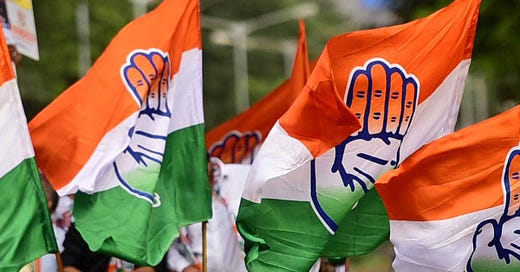How to Remake a Political Party
Political parties are not prisoners of history as popular analysis suggests
Published in The Hindu
Political parties are prisoners of their own history. This is what popular analysis will have us believe, often locating the present status of this or that political party in historical events. For instance, one popular narrative seeks to trace the genesis of the present woes of the Congress party in its past decisions such as the Shah Bano case and the opening of the Babri Masjid locks for Lord Ram’s worship. The present is of course a function of the past. However, this manner of analysis grossly overstates the significance of the past when it comes to political parties.
India’s ahistorical generation
India’s electorate is much less ideological than this analysis presupposes. Sixty-five per cent of India’s population is below the age of 35 years and has no personal experience of the events political analysts cite. Moreover, this is an exceptionally ahistorical generation; the majority of the electorate simply does not know anything about the events analysts seek to foreground to explain the present. The ignorance is compounded with an indifference and proclivity to discount the past based on their current perception. These perceptions themselves are amorphous, grounded in the relative strength of prevailing narratives as opposed to the outcome of personal review and deliberation. There are of course highly ideological sections of the electorate, such as civil society. However, this section, by and large, does not have the political heft to impact the electorate in a significant manner. Finally, voters work with a limited set of options. Given that the vote is a binary instrument to encapsulate a range of aspirations and grievances, there is only so much of an impact “history” can have on a party’s prospects.
This malleability on the part of the voter gives the leadership of the party considerable freedom to remake the party if sh/e wants to. To remake a political party, the leader must do two things: change the organisation and change the message. It is here that history plays a role. Parties become mired in the past not because of past events but due to a lack of churn in the organisation and an inability to adapt to changing voter aspirations. Across the spectrum, parties that have declined have suffered not from their historical blunders but from stasis: stasis in the organisation and messaging, even while the competitive landscape changes and the country’s electorate goes through considerable shifts due to changing demographics, social mores, technology, etc. Parties decline due to a disconnect with the electorate, not history.
The case of two parties
Party leaders such as Rahul Gandhi and Aditya Thackeray have tried to remake their parties in some measure: Mr. Gandhi wanted to drive an anti-establishment agenda through an establishment party; Mr. Thackeray tried to pivot to an upper-class liberal plank on the back of a right-wing street party. However, in a political party, more than anywhere else, personnel is policy. It is thus not possible to change the party agenda without convincing or changing the organisation.
In the case of the Congress, power did not fully transition to Mr. Gandhi and thus the change was faltering and piecemeal. In the case of the Shiv Sena, Mr. Thackeray exercised delegated power at the top on some issues. While he did not necessarily initiate changes in the larger organisation, he gave primacy to different skills than those which existed in the organisation. Consequently, there was pushback in varying degrees in both instances. This also illustrates a fundamental tenet of power: the exercise of power has to be compatible with the manner of acquisition of power. A party which draws power from a certain kind of street politics cannot pivot to a liberal agenda because significant power will continue to vest in the street politicians. So, messaging pivots require a huge amount of political capital or a clear path to power on the back of the new plank.
A message for the party leadership
Ultimately, the ability to remake a party requires three things of the leadership: first, the ability to consolidate power and enforce one’s will on the party; second, to effect wholesale change in the organisation and exercise control over those remaining; third, provide new messaging for the party which either shapes or responds to the feedback from the ground. These three things were successfully executed by Indira Gandhi when she split the Congress party. Narendra Modi too did this when he took over the leadership of the Bharatiya Janata Party. In both instances, the two leaders were able to consolidate power, marginalise dissenters and push their own people through the organisation, and remake the party in their own image. Of course, even with consolidation of power, the success of any political party is contingent on finding a message which resonates with the people. This requires a constant feedback loop from the ground which allows parties to change and adapt.
A review of the trajectory of parties in our country and around the world shows that political parties are defined by their top leadership. Thus, each new leader has significant power to remake their party. The reason political parties in India seem mired in their past has less to do with voters’ preoccupation with history but more because there has been very little churn in the party organisation.
Also Read: A Political Party Is Not A Company



